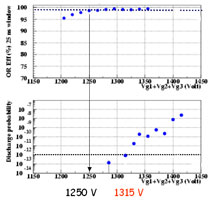Performance with X-Ray.
We didn't observe discharges
with X-Ray also with high fluxes
(50 MHz/cm2).

Discharge measurement at PSI.
GEM detectors have been tested at PSI with a hadron
beam of 50 MHz
on the active area.
Discharges have been counted by monitoring current spikes on pad readout.
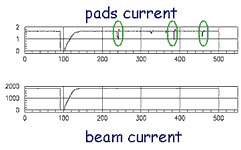
Discharge probability with
Ar-CO2-CF4: 60-20-20.
We have measured discharge probability with different
flux at different chamber gain.
Some differences are observed between chambers with transfer gap of 2
and 7 mm.
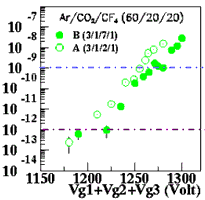
Discharge probability
with
Ar-CO2-CF4: 45-15-40.
At the working point we reach a discharge probablity of 10^-13.
With a discharge probability of 10^-9 the inefficiency due to the recharge time is 1%.
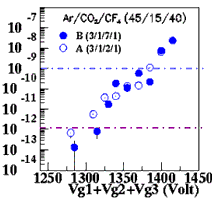
Discharge probability with
Ar-CF4-C4H10: 65-28-7.
With this gas mixture we have reach 65Volt working plateau between
95% efficiency in 25 ns and discharge probability of 10^-12.
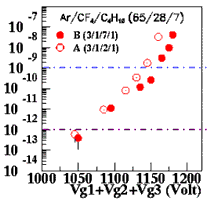
10^-12 in 10 years at LHCb.
